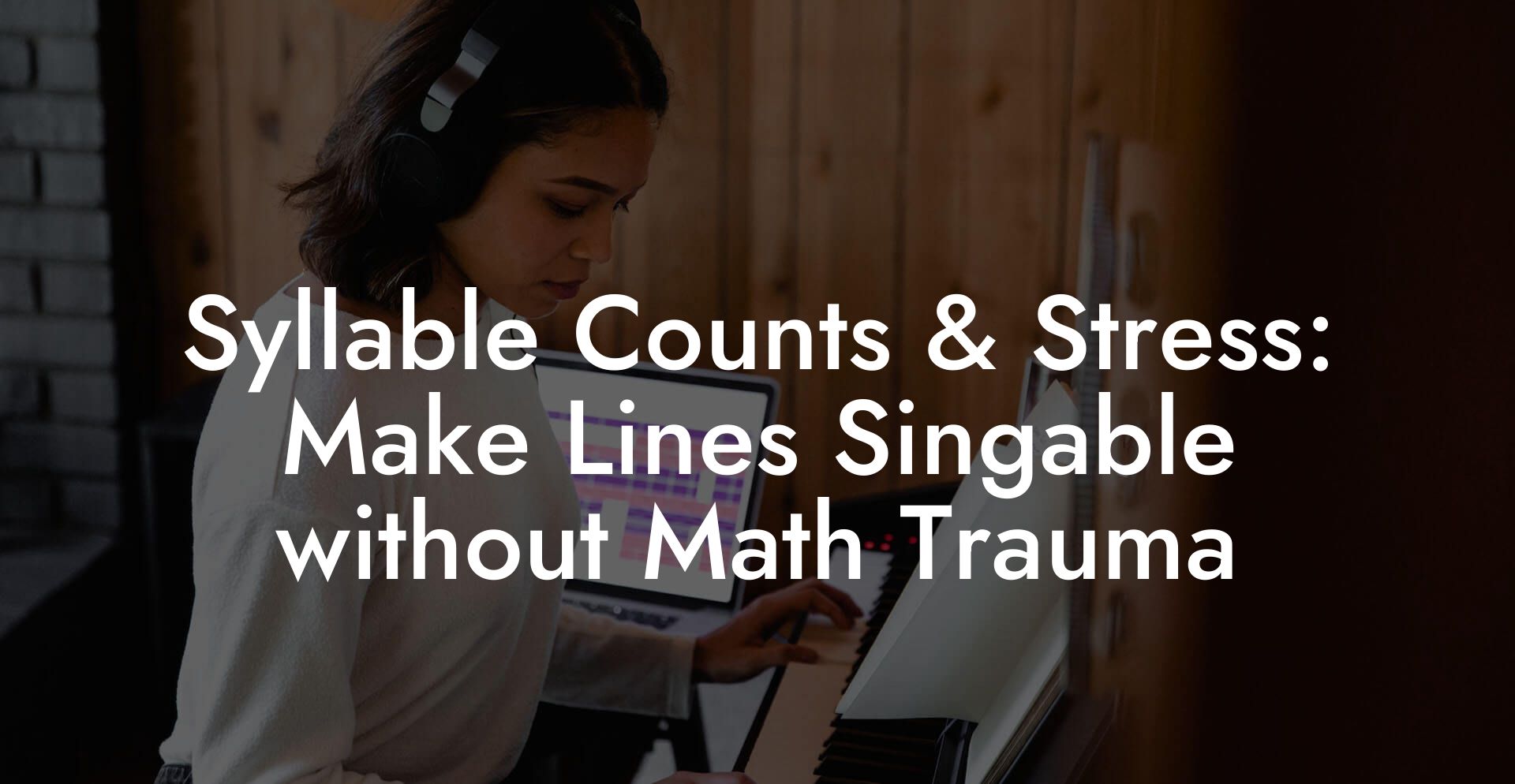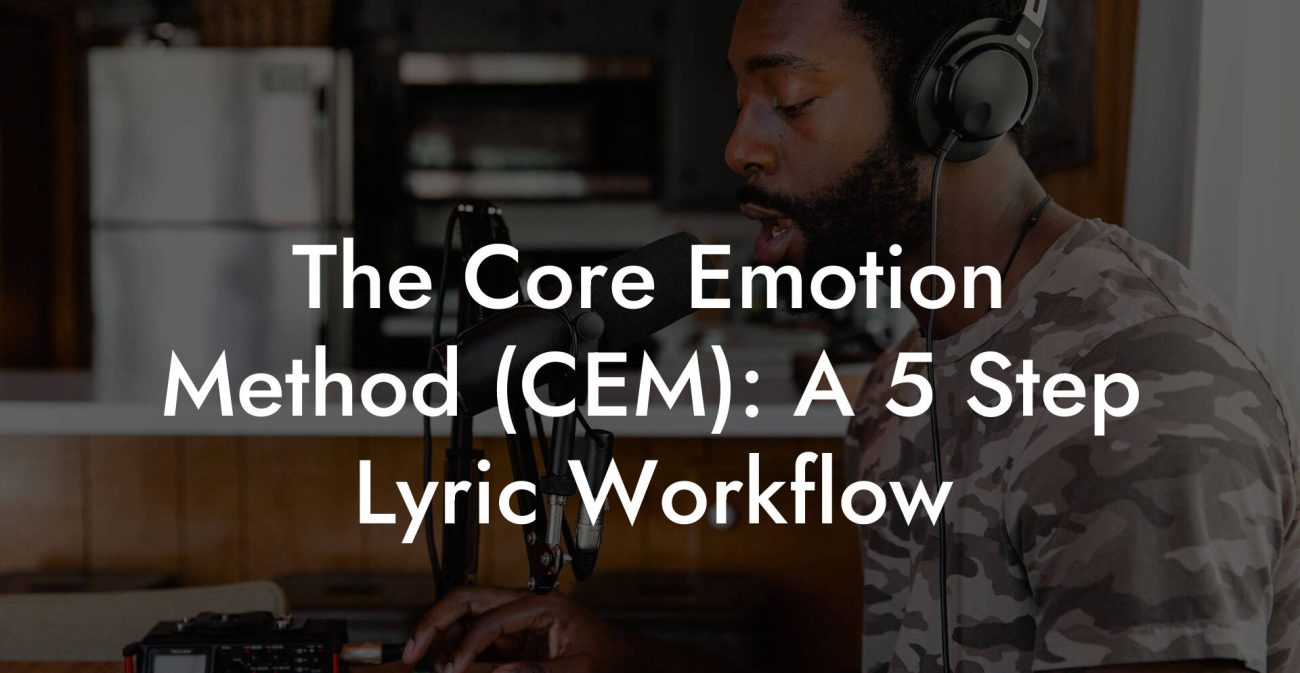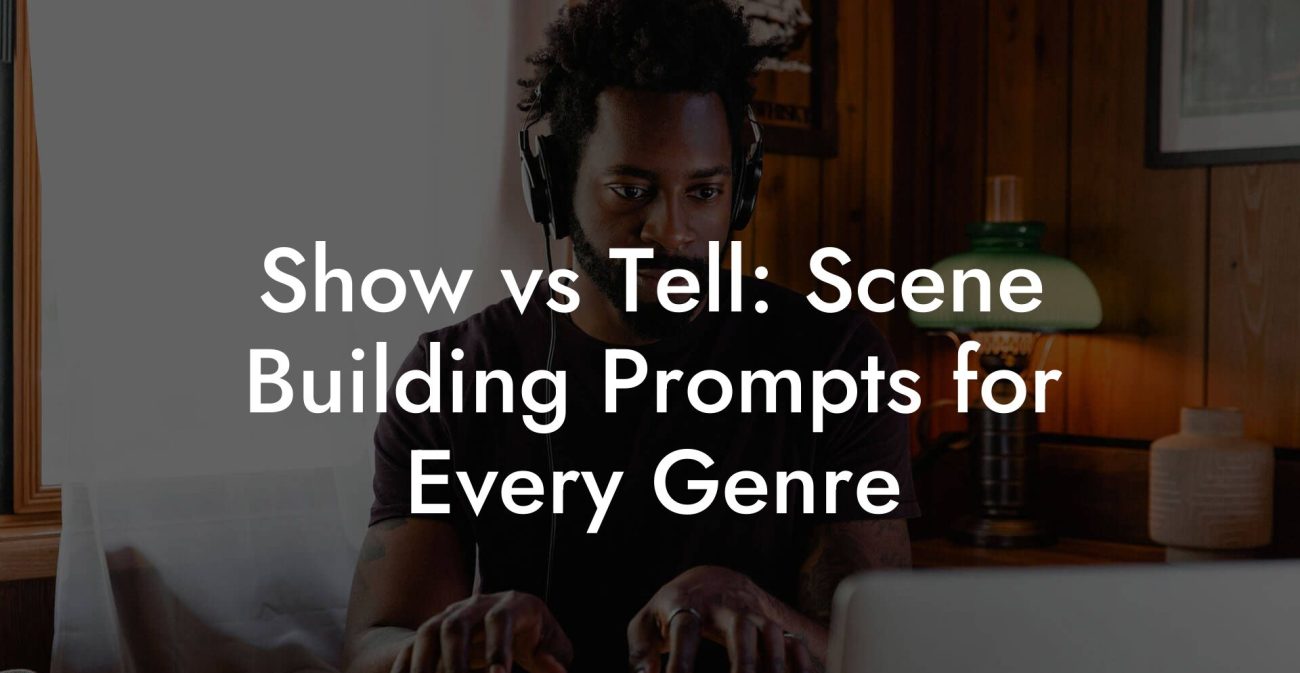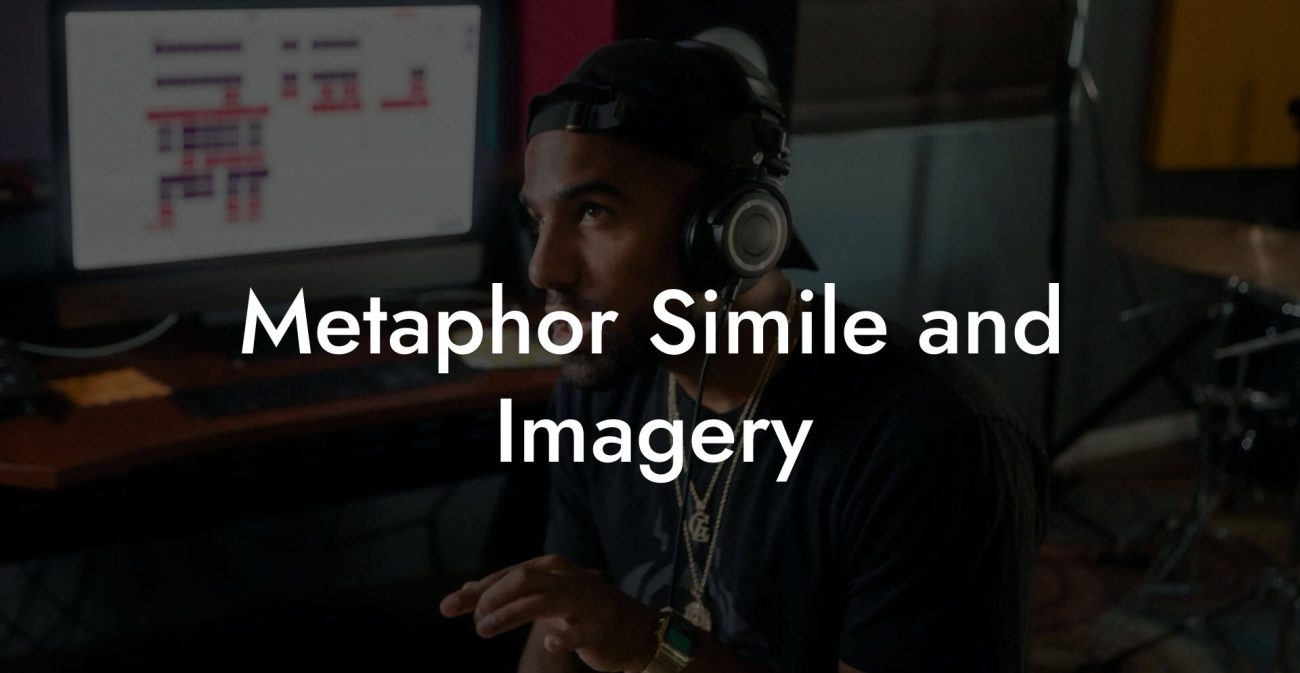Songwriting Advice
Syllable Counts & Stress: Make Lines Singable without Math Trauma

Stop treating syllable counting like algebra for your heart. You do not need to memorize a secret formula to make lines fit a melody. You just need to understand two things. Where the strong beats are. Which syllables want to be loud. This guide turns what feels like lyric math into a practical toolkit that even your distracted brain will use. Expect blunt examples, weirdly helpful metaphors, and exercises you can finish between a coffee sip and a text reply.
Quick Interruption: Ever wondered how huge artists end up fighting for their own songs? The answer is in the fine print. Learn the lines that protect you. Own your masters. Keep royalties. Keep playing shows without moving back in with Mom. Find out more →
Quick Links to Useful Sections
- Why syllable counts and stress matter
- Key terms explained in plain language
- Quick diagnostic: Does the line fit or fight the music
- Three red flags
- How to count syllables without losing your mind
- Method A Clap and speak
- Method B Chin trick
- Method C Dictionary cheat with a twist
- Where stress lives in a phrase and why it matters
- Real life scenario
- Common stress patterns and how they behave in songs
- Practical workflow to align syllable count and stress with the melody
- Example applied
- Elision and contraction the singer friendly cheat codes
- How to handle long monosyllabic runs like in rap
- Melisma and holding a syllable across many notes
- Genre specific advice
- Pop
- R&B Soul
- Hip hop and rap
- Folk and singer songwriter
- Fixes for the five common syllable and stress problems
- Problem 1 Too many syllables in a bar
- Problem 2 Important word falls on a weak beat
- Problem 3 The chorus feels busy but not memorable
- Problem 4 Line slips off tempo when sung live
- Problem 5 Melisma hides the lyric meaning
- Before and after examples you can steal
- Example 1 Pop chorus
- Example 2 R&B hook
- Example 3 Rap bar
- Exercises to build your syllable and stress instincts
- Exercise 1 The beat bucket
- Exercise 2 The stress swap
- Exercise 3 The slow sing
- Exercise 4 Genre swap
- Recording tricks that make alignment clear
- Collaboration tips when you work with producers and co writers
- When to ignore syllable rules
- Common mistakes and the idiot proof fixes
- Checklist to use before finalizing a vocal take
- Songwriter sanity saving templates
- FAQ
Everything below is written for busy songwriters who want immediate results. You will learn how to count syllables without panic, how to map stress to beats so lines do not fight the music, how to fix crammed or lazy lines, and how to keep your phrasing human when the melody gets weird. We explain every term as if you are texting a friend who is also a little bit dramatic. At the end you will have concrete drills, before and after examples, and a checklist you can use in the studio. No theory gatekeeping. No math trauma. Just better songs.
Why syllable counts and stress matter
Imagine your melody is the highway and your words are cars. If you try to cram four SUVs into one compact lane on the chorus, the listener feels the jam. If your punchline lands on a weak beat it will feel apologetic even if the lyric is savage. Syllable counts help you pace out how many syllables the melody wants. Stress tells you which syllables must land on strong beats. Get those two right and the song breathes. Get them wrong and the listener feels friction without knowing why.
Two quick real life scenes
- You are on stage and the chorus feels awkward because your lyrics keep tumbling into the snare. Fixing stress alignment will cut a full second of stage panic. You will look like you own it.
- You are in the studio and your rapper friend writes a line that sounds busy. Counting syllables per bar will show the problem. A few syllable swaps and the verse flies. Fewer breaths. Better flow.
Key terms explained in plain language
We promise to explain every jargon as it appears. Here are the main words you will see.
- Syllable A unit of sound in a word that usually contains a vowel sound. Example: bas-ket-ball has three syllables. We say it like this bas ket ball. Yes you can clap it. That helps.
- Stress The syllable in a word that you naturally say louder or longer. In the word record as a noun the stress is on the first syllable. As a verb it flips. Stress can change meaning.
- Prosody How the words, their stress, and the melody fit together. Good prosody means the important words land on musical beats so the listener hears them clearly.
- Scansion A fancy word that means marking stressed and unstressed syllables and aligning them to beats. Think of it as a blueprint for how a line will sit.
- Beat The steady pulse in music. In pop this is usually four beats per measure in 4 4 time. The first beat of a measure is the downbeat and feels strongest.
- Topline The vocal melody that sits on top of the track. Writers often write toplines over a loop or a chord pattern. We will use this word when we say singable melody.
- Elision Dropping or smoothing a syllable when singing. Example: do not can become don t in casual singing. Elision is a tool not a sin.
Quick diagnostic: Does the line fit or fight the music
Before you rewrite anything, run this fast test. Clap your hands to the beat of the song. Speak the line in normal speech while clapping. If the line wants to push ahead of a beat or collapse behind a beat you have a prosody misalignment. If the line runs faster than the available rhythmic space you have a syllable density problem.
Three red flags
- The lyric feels like it needs an extra breath to finish the bar. That is a too many syllables problem.
- The important word in the line lands on a weak beat and sounds apologetic. That is a stress mismatch.
- The melody stretches a single syllable into many notes and the line becomes unreadable. That is excessive melisma and you need clarity for the hook.
How to count syllables without losing your mind
Counting syllables is not a brain surgery exam. Use one of these three low friction methods based on what you prefer.
Method A Clap and speak
- Say the word or line out loud. Clap each time you hear a vowel sound. The number of claps equals syllables.
- Do it at normal speaking pace. Singing changes syllable feel but the count remains consistent.
- Example: "I miss your stupid coffee mug" becomes I miss your stu pid cof fee mug. Count six claps.
Method B Chin trick
Place your hand under your chin and speak the word slowly. Each time your chin drops is a syllable. This is especially handy in the shower. You will look ridiculous and that is ok.
Method C Dictionary cheat with a twist
Use an online dictionary that shows syllables. Then say the line and trust your ear over the dictionary if you sing it differently. Singers can elide or merge syllables live. Use the dictionary as a baseline not an authority.
Where stress lives in a phrase and why it matters
Every language has patterns of stress. English tends to prefer strong words on strong beats. A typical musical pulse places emphasis on beats one and three in 4 4 time. When a strong syllable lines up with a strong beat the line feels natural. When a weak syllable sits on a strong beat the melody can feel like it is pushing against language. That produces friction.
Example:
Line: I will be fine with this
Syllable and stress map: i WILL be FINE with THIS
If your melody puts WILL on beat one you will hear intention. If your melody puts be on beat one the line will sound limp.
Real life scenario
You wrote a chorus line that slaps in your head. On the demo the lead vocal sounds rough because the word you wanted to hit the downbeat is an unstressed syllable. The fix is simple. Move the strong word to the downbeat by reordering or substituting and the chorus will feel like it lands.
Common stress patterns and how they behave in songs
English has recurring feet or groupings. You do not need to memorize them all but recognizing a few helps. Below are the most common patterns with a plain example and how to use them.
- Trochee A stressed syllable followed by an unstressed syllable. Example: HAP-py. Trochee feels forward moving. Use it when you want a confident start.
- Iamb An unstressed syllable followed by a stressed syllable. Example: aWAY. Iamb creates a lift toward the stress. Use it for build lines that resolve on the second syllable.
- Anapest Two unstressed syllables followed by a stressed syllable. Example: in a FLASH. It feels like a quick push and then punch. Good for punch lines.
- Dactyl A stressed syllable followed by two unstressed syllables. Example: MER-ri-ly. It gives a rolling feel and can be used for playful lines.
These are poetry words and you can ignore their names once you learn the feeling. Think of them as rhythm personalities that you can borrow when you want a specific vibe.
Practical workflow to align syllable count and stress with the melody
Here is a reproducible workflow you can use every time you write.
- Mark the beats Count the beats in the bar. If the song is 4 4 count one two three four. If you prefer tapping on your thigh that is valid performance art. Write small numbers above the staff or lyric draft to show beats.
- Speak the line Speak the lyric in a natural voice while tapping the beat. If natural stresses fall on the same beats you tapped you are lucky. If not, proceed.
- Scansion grid Draw a simple grid with beats across the top and syllables under it. Slot each syllable into a box. Mark stressed syllables with an S. Now you can see the mismatch.
- Choose a fix Use one of these moves when there is a mismatch: move a word, swap a synonym with different stress, eliminate a syllable with elision or contraction, change the melody so the strong note hits the strong syllable, or rewrite the line.
- Re test Sing the new line over the beat. If it breathes, you win. If not, iterate.
Example applied
Melody wants one two three four with the hook on beat one and three.
Original line: I'm gonna miss you when you go
Syllable count: I'm gon na miss you when you go equals seven syllables
Stress mapping in natural speech: I'm GON-na MISS you WHEN you GO
The stressed word gon-na is awkward because GON lands on beat two. We want MISS to hit beat one. Fix by reordering and compressing.
Rewrite: I will miss you when you go
Syllables now: I will miss you when you go equals seven syllables but stress map is I WILL MISS you WHEN you GO which allows MISS to sit on beat one. If the melody still fights, contract to I'll miss you when you go and use elision to flow.
Elision and contraction the singer friendly cheat codes
Contraction means combining words like I will into I'll. Elision means removing or smoothing syllables when singing. Both are tools that singers use all the time. Use them to keep cadence without losing meaning.
Examples of elision
- going to becomes gonna in pop and rap. This saves syllables and adds personality.
- you are becomes you're. The contraction is often cleaner on a melody.
- over is sometimes sung as o'er in poetic context. That is a choice not a requirement.
Warning: Overuse of elision can make lyrics sound lazy. Use it intentionally and keep a few full phrases that sound real when sung clean.
How to handle long monosyllabic runs like in rap
Rap often packs many syllables into a bar. This is a skill in breath control, rhythm and smart word choice. Here are quick rules.
- Map syllables per beat not per bar. Aim for an average that fits your tempo. A fast 4 4 tempo at 140 beats per minute can fit more syllables than a slow ballad at 70 bpm.
- Use internal rhyme and syncopation to relieve pressure. Syncopation is placing syllables off the straight beats to create bounce. That makes a lot of syllables feel rhythmic rather than frantic.
- Mark your breath spots. Put a slash where you will inhale. Train your lungs to finish a phrase before the break.
Melisma and holding a syllable across many notes
Melisma means stretching one syllable over several notes. It is beautiful when used sparingly. If your chorus has a signature word that you want to decorate with melisma go ahead. If your hook needs to be instantly repeatable keep the syllable count simple and the melisma minimal. An overdecorated title line will not be memorable in karaoke scenarios.
Genre specific advice
Different styles have different tolerances for syllable density and stress rules.
Pop
Keep syllable counts low and stress clear. Hooks must be singable by a crowd. Aim for 3 to 8 syllables per line in the chorus depending on melody. Use short vowels and repeated phrases for maximum earworm effect.
R&B Soul
Allow more melisma and fewer strict stress matches. The voice can ornament. Still mark the main stressed words and ensure they land on strong beats so the emotional center is clear.
Hip hop and rap
High syllable density is normal. Focus on internal rhythm and breath planning. Syncopation is your friend. Use counts per beat rather than per bar. Rappers often aim for an even look of syllables on each beat to create a compelling flow.
Folk and singer songwriter
Natural speech prosody matters more than perfect syllable math. Aim for conversational lines and let meter breathe. If a line sounds like a sentence you will connect with listeners.
Fixes for the five common syllable and stress problems
Here are five problems you will actually face and step by step how to fix them.
Problem 1 Too many syllables in a bar
Fix steps
- Count syllables and divide by beats. If the average exceeds two per beat in a slow tempo you are crowded.
- Compress words with contractions or elisions. Replace phrases with shorter synonyms.
- If meaning gets lost cut a non essential image or swap for a tighter metaphor.
Problem 2 Important word falls on a weak beat
Fix steps
- Re order the line so the strong word moves earlier or later to the beat you want.
- Swap to a synonym whose stressed syllable sits where you need it.
- Or adjust the melody so the strong note aligns with the word. This is production territory but often easier than rewriting the lyric.
Problem 3 The chorus feels busy but not memorable
Fix steps
- Simplify the chorus to a short title phrase. Repeat it. Short lines are easier to remember.
- Reduce melisma on the title. Keep it singable for fans at a gig.
- Make sure the title lands on the downbeat or a long note.
Problem 4 Line slips off tempo when sung live
Fix steps
- Mark where you and your band speed up or slow down. That is often a breathing issue.
- Rearrange phrasing to include natural breath points. Add a rest or a beat of silence where needed.
- Practice the line with a metronome until your muscle memory matches the grid.
Problem 5 Melisma hides the lyric meaning
Fix steps
- Strip the melisma from the core hook and record a plain vocal. If the hook still works, the melisma was decoration not necessity.
- Keep melisma for bridges or ad libs where meaning is already secure.
- Use doubles or harmony to add texture without swallowing words.
Before and after examples you can steal
These are short. You can copy, paste and test them in your DAW or notebook now.
Example 1 Pop chorus
Before: I am going to be so fine without your face around my kitchen counter
Problem: Too many syllables and stress unclear
Count: I am go ing to be so fine with out your face a round my kitch en coun ter equals a lot
After: I will be fine without you in my kitchen
Why it works: The chorus centers the strong words I WILL BE FINE and kitchen is a concrete image that sits later. Simpler, singable, and crowd ready.
Example 2 R&B hook
Before: I cannot stop thinking about every single midnight that we wasted
Problem: Clunky stress and long line
After: Can t stop thinking on those midnights we wasted
Why it works: Contraction saves syllables. Stress moves to midNIGHTS which can sit on a long note and carry the emotion with melisma if desired.
Example 3 Rap bar
Before: I keep my hustle focused, never losing track of momentum
Problem: Polysyllabic words make flow heavy
After: Keep the hustle tight, never lose the momentum
Why it works: Internal rhythm tightened, stress on HUS-tle and MO-men-tum, more punch per beat.
Exercises to build your syllable and stress instincts
These drills take five to twenty minutes and will change how you hear lines forever.
Exercise 1 The beat bucket
Pick a simple 4 4 loop at 80 to 100 bpm. Speak sentences from your phone notifications over the loop. Clap the beats while you speak. Notice which notifications clash. Rewrite the clash lines until they sit. Do this for twenty lines and you will start to instinctively hear misfits.
Exercise 2 The stress swap
Write one line that is emotionally crucial in your song. Now write five alternate versions that change which word is stressed. Sing each over the beat. The version that best aligns with the musical stress will sound like it belongs. This reveals how small word shifts change perceived meaning.
Exercise 3 The slow sing
Take your chorus and sing it at half tempo. Count syllables per beat. This will expose stuffed lines. Now return to normal tempo and see which lines still feel loose. Slowing down reveals where the language fights timing.
Exercise 4 Genre swap
Take the same lyric phrase and adapt it to pop, R&B and rap by changing syllable density and stress. Notice what you keep and what you change. This builds flexible phrasing skills that help in collaborations.
Recording tricks that make alignment clear
- Record a raw spoken version with the beat. Play it back and mark where the natural stress lands. This is often more honest than your sung attempts.
- Use the metronome click in headphones and place a soft vocal guide on top. Sing along to check timing without production glare.
- Try a double tempo guide. Recording a line faster reveals where breaths and syllables pile up when you return to normal speed.
Collaboration tips when you work with producers and co writers
Say clearly which syllables you want emphasized. Sing the line and point to the beat. If a producer suggests moving the vocal one sixteenth of a beat earlier or later, test it. Small nudges produce big sense of groove. When co writing, share your scansion grid so writers speak the same language and you avoid guessing games.
When to ignore syllable rules
Rules exist to serve expression. Break them when the emotional payoff demands it. A sloppy stress can sound like vulnerability. A late entry can feel like a stumble and that is sometimes exactly the feeling you want. Use rules as tools not shackles. If the emotional truth of the line benefits from mismatch keep it. Label it so it is intentional and reproducible live.
Common mistakes and the idiot proof fixes
- Mistake Trusting your demo sax riff to hide sloppy prosody. Fix Record a dry vocal over click and check alignment.
- Mistake Thinking syllable counts must be identical across verses. Fix Aim for similar density not exact matches. Variety can be musical.
- Mistake Using fancy words that stress in the wrong place. Fix Swap for ordinary words with better stress or rearrange the melody.
- Mistake Over contracting everything so the lyric loses clarity. Fix Keep at least one uncropped line for contrast and meaning.
- Mistake Assuming listeners notice your technical tweaks. Fix They will notice the result. If it breathes the audience feels it not the process.
Checklist to use before finalizing a vocal take
- Can you speak each line on the beat without extra breaths?
- Do the emotional words land on strong beats?
- Are there places where melisma blurs meaning? If yes, mark them for cleanup.
- Is syllable density reasonable for the tempo and genre?
- Have you marked breaths and practiced them with the band or backing track?
- Does the chorus title sit on a long syllable or clear beat so the crowd can sing it back?
Songwriter sanity saving templates
Paste this mini template into your lyric doc and use it every song.
Tempo: put bpm
Time signature: put time sig
Chorus target syllables per line: 3 to 8
Verse target syllables per line: 5 to 10
Stress target for title: downbeat or long note
Breath spots: mark slashes
FAQ
How do I count syllables in a contracted phrase
Say the phrase out loud as you plan to sing it. Contractions count as the sound you will produce. I'll counts as one syllable. Gonna counts as two. Use your ear first and a dictionary as backup.
What if my melody forces a strong syllable into an unstressed word
Try swapping words or reorder the phrase. If the meaning depends on that exact word think about changing the melody so the strong note lands where the stress is. You can also use a light melisma to highlight a new stressed syllable in the neighborhood.
Is it ok to change words to fit the melody
Yes. Lyrics are malleable. Keep the emotional truth and change the wording until the line sits. Many classic hooks exist only because the songwriter replaced a clunky phrase with an immediate image. Swap for single syllable words when you need punch.
How do I know when to elide
Elide when the line sounds cramped. If contraction makes the line clearer and singable it is useful. If elision makes a line sound fake or forced keep the full words. Always prefer clarity over cleverness.
Can I break rules for dramatic effect
Yes. Intentional rule breaking can be powerful. If you place a stressed word on a weak beat to create unease that can add meaning. Do it knowingly and not by accident so you can reproduce the effect live and in a mix.





